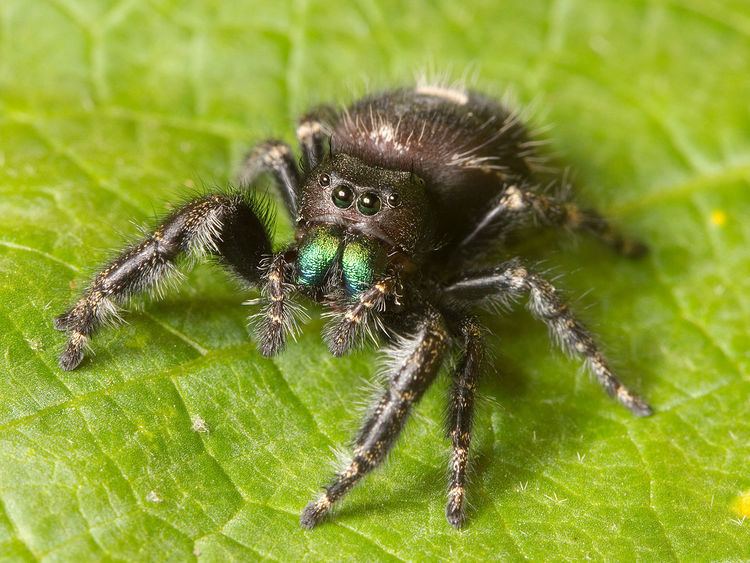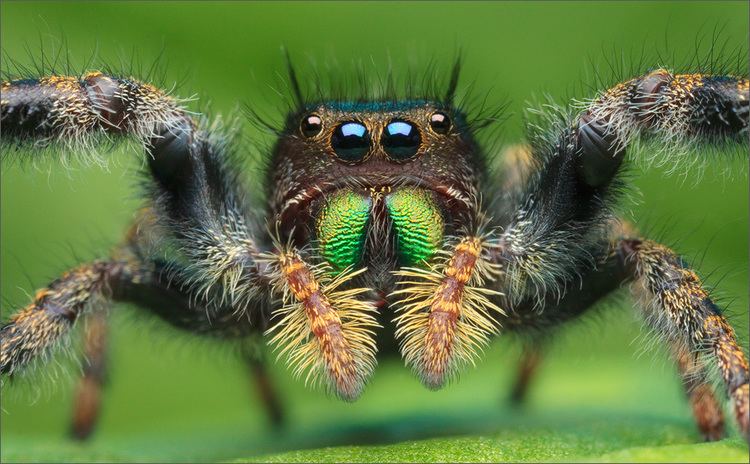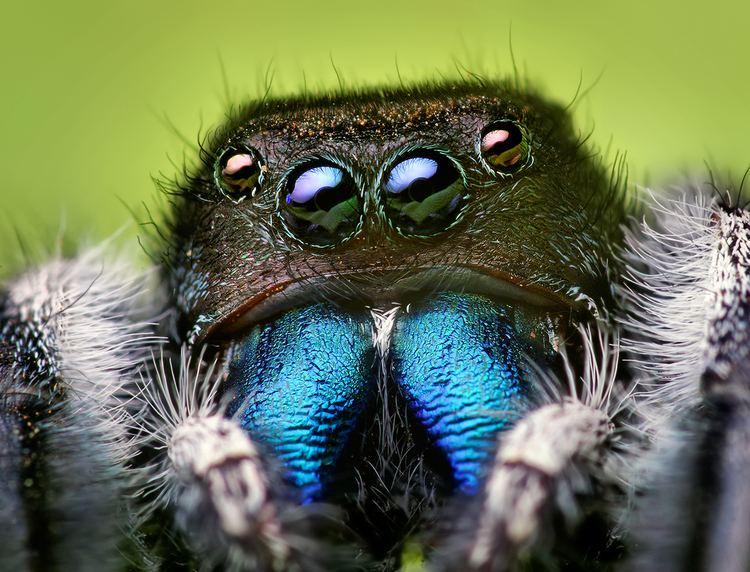Rank Species | Order Araneae Family Salticidae | |
Similar Phidippus, Jumping spider, Arachnid, Phidippus regius, Arthropod | ||
Phidippus audax is a common jumping spider of North America. It is commonly referred to as the daring jumping spider, or bold jumping spider. The average size of adults ranges from roughly 13–20 millimetres (0.51–0.79 in) in length. They are typically black with a pattern of spots and striped on their abdomen and legs. Often these spots are orange-tinted in juveniles, turning white as the spider matures. The spider belongs to the genus Phidippus, a group of jumping spiders easily identified both by their relatively large size and their iridescent chelicerae. In the case of P. audax, these chelicerae are a bright, metallic green or blue.
Contents

These spiders have been known to jump from 10 to 50 times their own body length by suddenly increasing the blood pressure in the third or fourth pair of legs, and the male may jump away during mating if the female approaches too quickly.

Like other jumping spiders, due to their large, forward-facing eyes, they have very good stereoscopic vision. This aids them when stalking prey, and allows some visual communication with others of their species, such as courting 'dances'.

Phidippus audax the bold jumping spider
Habitat

Like most jumping spiders, P. audax tends to prefer relatively open areas to hunt in, as they actively seek and stalk prey and do not build webs to catch food. They do use webbing, however, only when laying eggs or to hide. They also use spider silk as a 'lifeline' when jumping for prey or evading predators.
They are common in fields and grasslands, but are frequently seen on fences, exterior walls, and gardens as well. Many jumping spiders seem to prefer flat vertical surfaces, likely due to the fact that it enables them to spot and chase down roaming insects with ease.
Distribution
This species is common in southeastern Canada, eastern and central United States and parts of northern Central America, and has been introduced to Hawaii and the Nicobar Islands. It was previously uncommon through the Western United States, and the California Coast, though sightings have now become commonplace in Southern California. Other sightings include the Willamette Valley and Rogue Valley in Oregon.
Name
P. audax is the type species for the genus Phidippus. The species name is derived from the Latin word audax meaning "daring, audacious".
Bites
Like most spiders, P. audax rarely bites humans. While symptoms of a bite may vary, the most likely symptoms are slight pain and localized redness of the skin.
